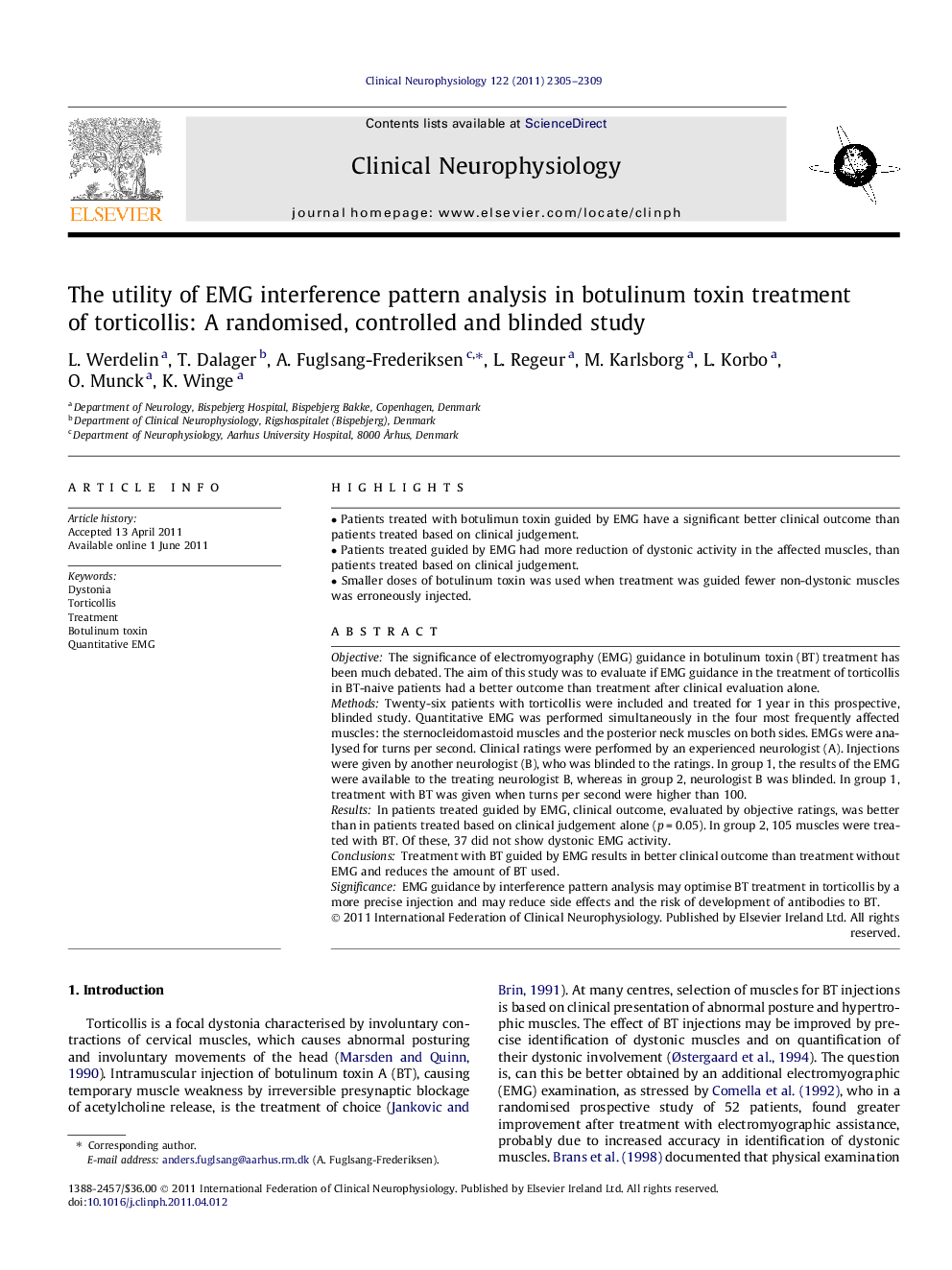| Article ID | Journal | Published Year | Pages | File Type |
|---|---|---|---|---|
| 3043812 | Clinical Neurophysiology | 2011 | 5 Pages |
ObjectiveThe significance of electromyography (EMG) guidance in botulinum toxin (BT) treatment has been much debated. The aim of this study was to evaluate if EMG guidance in the treatment of torticollis in BT-naive patients had a better outcome than treatment after clinical evaluation alone.MethodsTwenty-six patients with torticollis were included and treated for 1 year in this prospective, blinded study. Quantitative EMG was performed simultaneously in the four most frequently affected muscles: the sternocleidomastoid muscles and the posterior neck muscles on both sides. EMGs were analysed for turns per second. Clinical ratings were performed by an experienced neurologist (A). Injections were given by another neurologist (B), who was blinded to the ratings. In group 1, the results of the EMG were available to the treating neurologist B, whereas in group 2, neurologist B was blinded. In group 1, treatment with BT was given when turns per second were higher than 100.ResultsIn patients treated guided by EMG, clinical outcome, evaluated by objective ratings, was better than in patients treated based on clinical judgement alone (p = 0.05). In group 2, 105 muscles were treated with BT. Of these, 37 did not show dystonic EMG activity.ConclusionsTreatment with BT guided by EMG results in better clinical outcome than treatment without EMG and reduces the amount of BT used.SignificanceEMG guidance by interference pattern analysis may optimise BT treatment in torticollis by a more precise injection and may reduce side effects and the risk of development of antibodies to BT.
► Patients treated with botulimun toxin guided by EMG have a significant better clinical outcome than patients treated based on clinical judgement. ► Patients treated guided by EMG had more reduction of dystonic activity in the affected muscles, than patients treated based on clinical judgement. ► Smaller doses of botulinum toxin was used when treatment was guided fewer non-dystonic muscles was erroneously injected.
